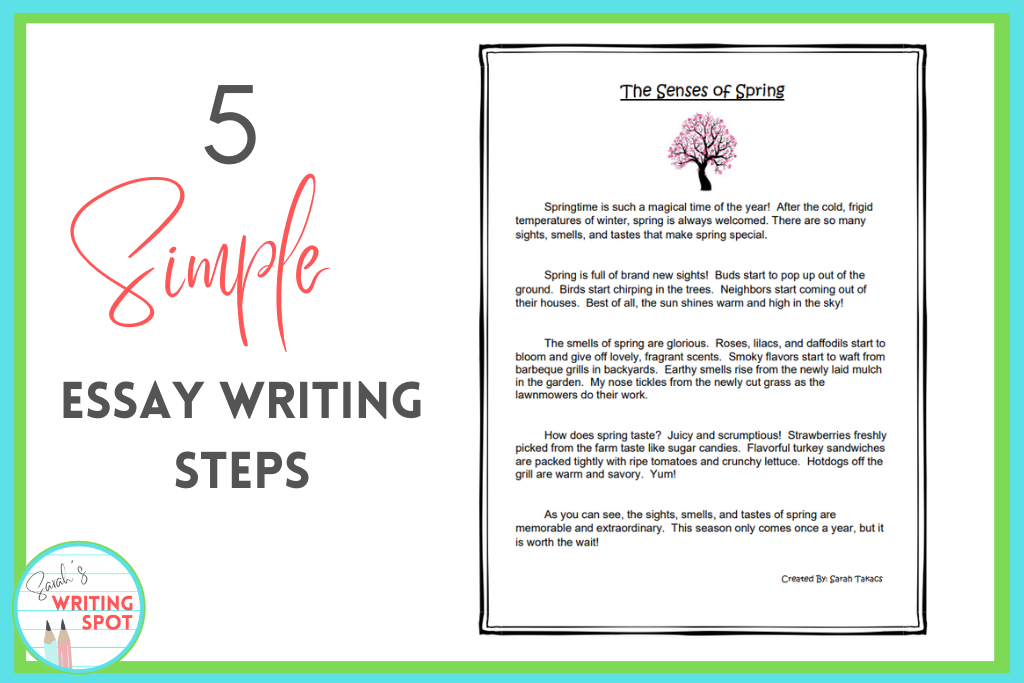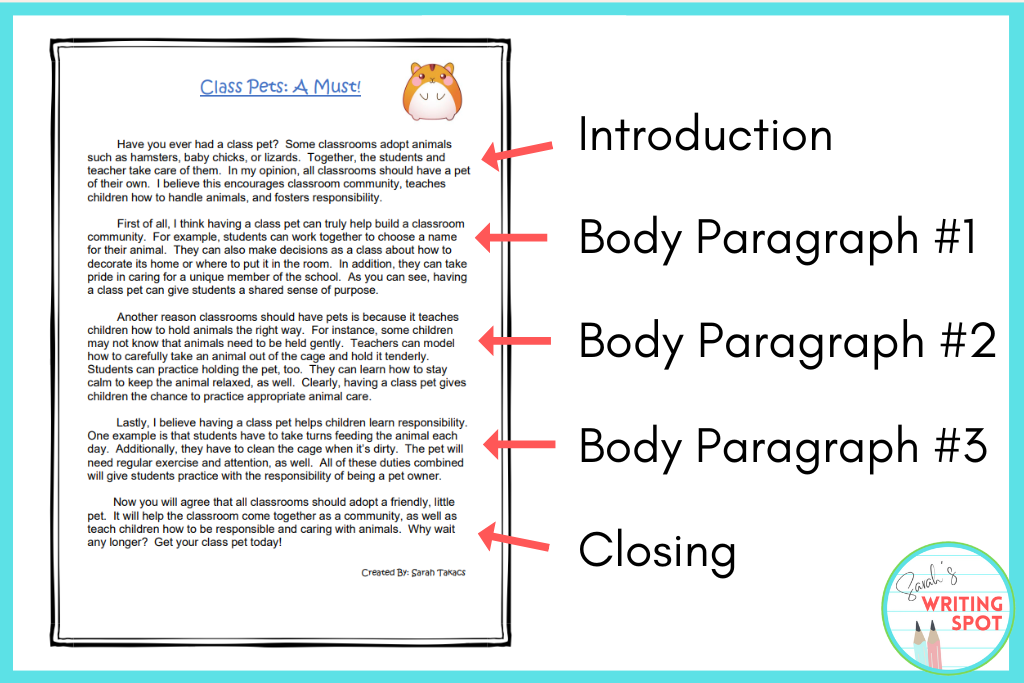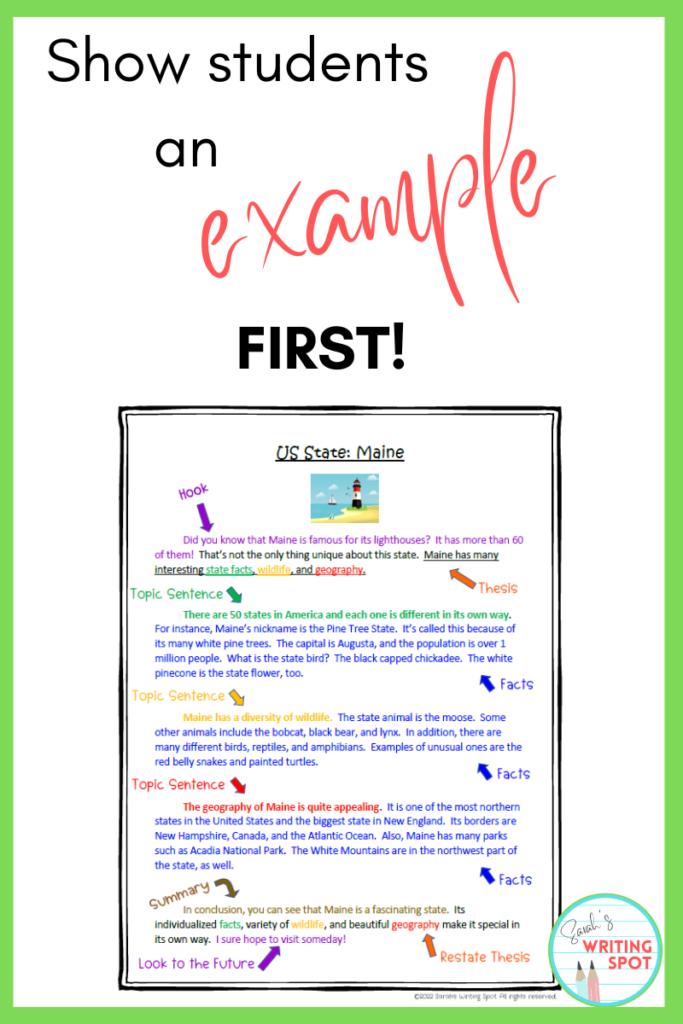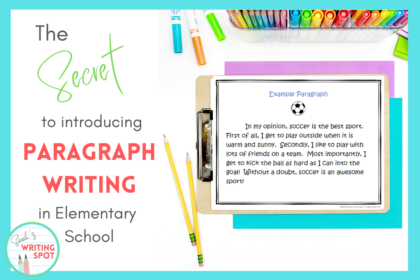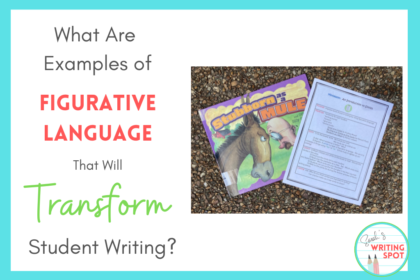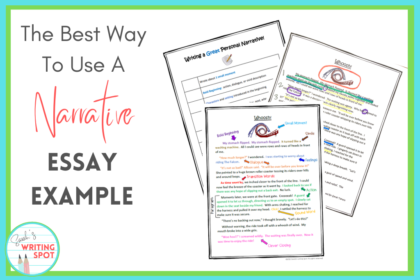Looking for some useful essay writing steps to get you through the next writing unit? Look no further! Read on to learn some simple ways to break essay writing down into small, digestible chunks. It’s time to keep the overwhelm at bay!
Before we jump in, though, how would you feel about extra writing tips and tricks sent straight to your inbox each month? Little nuggets of inspiration to keep you going with your writing plans. I’ve got ya covered! Click HERE to start receiving writing prompts, video tips, and other freebies throughout the school year.
The 5-paragraph essay. (Cue scary music and trembling pencils.)
An assignment that strikes fear into the hearts of young students (and even teachers!)
A staple of the upper elementary writing curriculum. The foundation of writing pieces for years to come.
How do you possibly tackle this beast?
When I first started teaching writing to 4th-5th graders, I dreaded the scary 5-paragraph essay. It seemed so daunting. So long. So overwhelming. Having started my career as a 3rd-grade teacher, I was perfectly happy to teach just one simple well-rounded paragraph instead.
With time and practice, however, I soon came to realize something unexpected: teaching 5-paragraph essays wasn’t all that bad after all! In fact, I actually started to enjoy it. (Gasp!)
What is a 5-Paragraph Essay?
What is a 5-paragraph essay exactly? Well, we already know the obvious: it is an essay with 5 paragraphs. However, each of those paragraphs is very intentional.
For instance, in most 5-paragraph essays, the structure follows this format:
Introduction
Body Paragraph #1
Body Paragraph #2
Body Paragraph #3
Closing
In the introduction, most 5-paragraph essays also have a thesis sentence that lays out the plan for the next three body paragraphs.
There are multiple types of 5-paragraph essays, as well. The most common ones include literary, descriptive, persuasive, and informational. Each one is slightly different, however they all follow the same basic structure.
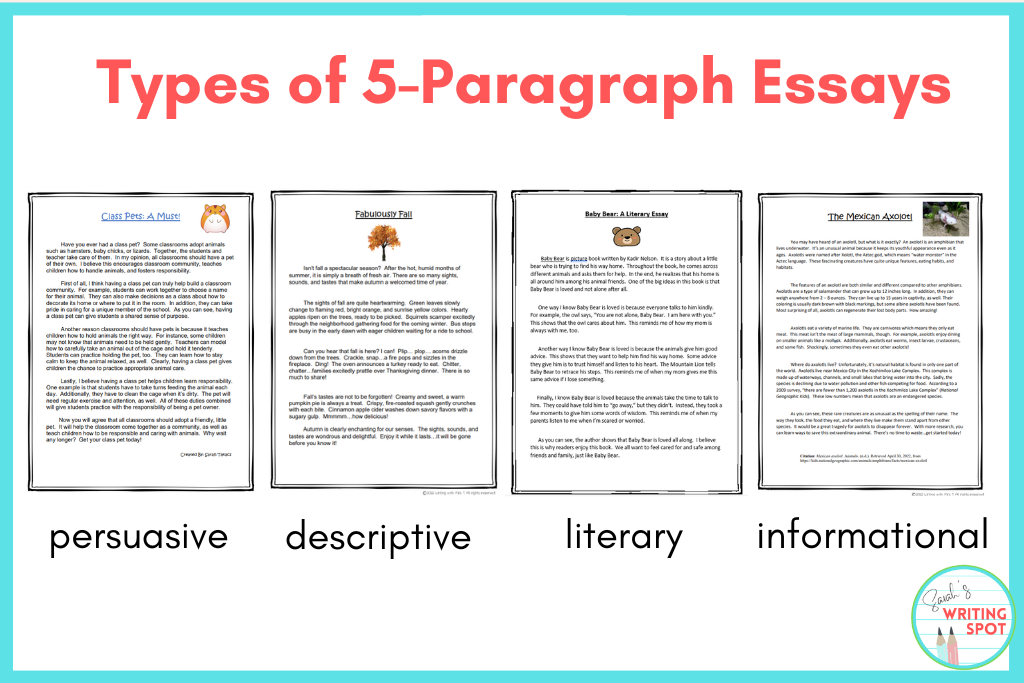
The Essay Writing Process Made Easy
Why do I enjoy teaching 5-paragraph essays now? Because they follow a distinct template. And I like templates. I love structure and organization. (That’s the Type A in me talking.)
Below, I’ve laid out the steps for helping your students write an essay from beginning to end. Let’s get started!
What Are the Steps of Writing an Essay?
Everything is easier when you break it down into smaller pieces. Help students see that they can chunk an assignment into the following distinct essay writing steps.
#1: Group ideas into 3 categories during pre-writing
Don’t miss this step! It is absolutely critical. It’s the step where students can braindump all of their ideas and organize them in a logical way. Without pre-writing, the rough draft will be a hot mess.
This is also the step students will skip if you aren’t paying attention. Many think it’s a waste of time; they’d rather just jump into the essay. What they usually discover, though, is that writer’s block soon sneaks in… because they haven’t organized their thoughts yet.
For pre-writing, I always have my students use a graphic organizer of some kind, whether it be a bubble graph or chart. Regardless of what you use, the important thing is that students are grouping their ideas into 3 categories. This will set them up for 3 strong body paragraphs.
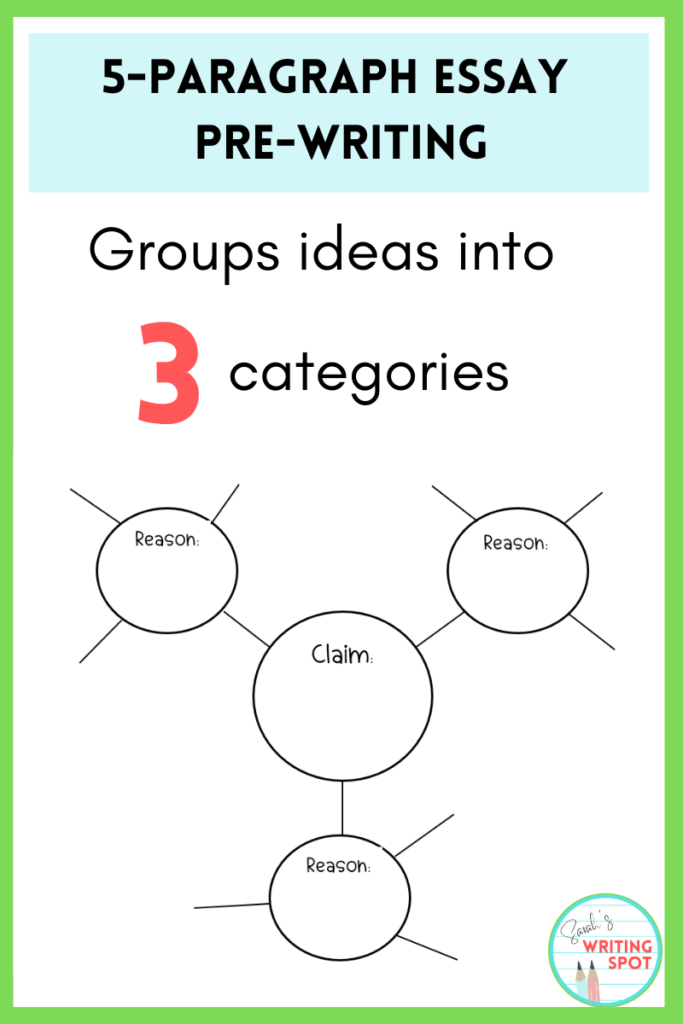
#2: Write a clear thesis statement
The thesis statement is the backbone of a 5-paragraph essay. Without it, the essay falls apart.
What is a thesis? you may ask. It is a succinct statement that lays out what the next 3 paragraphs will be about. I recommend keeping it to 1 sentence. It is usually the last sentence in the introduction.
Some examples:
*Axolots have unique features, habitats, and eating habits.
*Having a class pet fosters classroom community, responsibility, and appropriate animal care.
*There are so many sights, sounds, and tastes that make autumn a lovely time of year.
Notice that each thesis lists 3 topics. These 3 topics will be the subject of the next 3 paragraphs in the same order they are written.
I often have my students write the thesis before the rough draft. This ensures that the student does, indeed, have 3 strong topics to discuss in the essay.
#3: Write an organized rough draft
Student rough drafts can be handwritten or typed on the computer. Personally, I prefer 4th-5th graders to type their rough draft because they won’t need to rewrite it later. Most students this age usually write better on the computer anyway.
The rough draft should be a safe space for students to make mistakes and get their ideas on the page. Try not to be nitpicky about spelling and grammar…yet. (That comes in the next step.)
The rough draft should include the following:
Introduction: hook
main idea
thesis
Body Paragraph #1: topic sentence
3-4 detail sentences
Body Paragraph #2: topic sentence
3-4 detail sentences
Body Paragraph #3: topic sentence
3-4 detail sentences
Closing: summary
restate thesis
#4 Revise and edit for errors
Once the rough draft is complete, students should revise and edit to polish it up.
When revising, check for:
*hook
*thesis
*topic sentences
*linking words
*sentence variety
*varied sentence beginnings
*closing summary
When editing, check for:
*spelling
*grammar
*punctuation
*indented paragraphs
I recommend using a tailored checklist for revising and editing. This way, students take ownership over their own corrections and don’t skip any essential elements.
#5 Fancy up the final draft
Even if your students handwrite the rough draft, I recommend all final drafts be typed. Most students love adding images, as well as changing the color and font of the text. In the end, these additions make their work look professional!
Essay Writing Tips for Beginners
Are you teaching students who have never written an essay before? Keep these tips in mind before you get started:
Use models: Before starting a writing unit, show your students an example first. Break the example down and analyze all of the parts that are essential to a well-crafted essay.
Keep it simple: Sentences don’t need to be long and flowery. They need to be succinct and clear. Encourage students to just focus on the essential elements the first time they write an essay.
Work in small chunks: Break the essay into easily digestible parts. Spend 1 day EACH on the following. For every lesson, remember to model an example first before students give it a try:
*Pre-writing
*Thesis Sentence
*Introduction
*Body Paragraph #1
*Body Paragraph #2
*Body Paragraph #3
*Closing
*Revising/Editing
*Final Draft
Be thorough with pre-writing. The more details your students list in a brainstorm, the easier it will be to write the rough draft.
Most importantly, encourage your students to keep at it! Essay writing gets easier with practice.
Essay Writing Steps: Final Thoughts
Now you’re armed with a plan and have plenty of tips in your pocket. It’s time to tackle that next essay unit with confidence and help your kiddos feel the pride of nailing a 5-paragraph essay. You’ve got this!
Write on, my Writing Friend!
SARAH
Looking for more essay writing tips and tricks?
Try these other blog posts below!
9 Awesome Writing Tips for Essays in 4th-5th Grade
8 Sharp Tips for Teaching How to Write in Elementary School
The Best Way to Use a Narrative Example with Growing Writers
